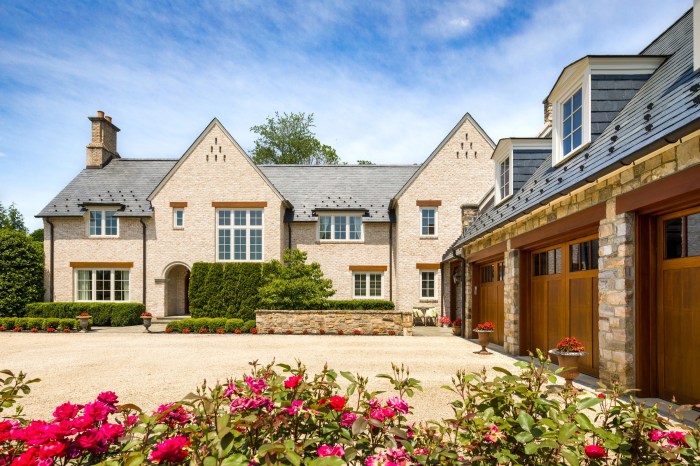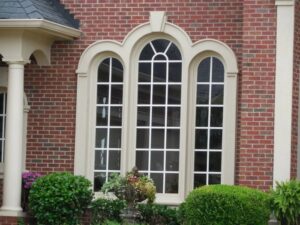
Sustainable building with brick and stone offers a unique way to merge durability with environmental consciousness. By utilizing these timeless materials, we can create structures that not only stand the test of time but also contribute positively to our planet.
With energy efficiency at the forefront of modern construction, buildings made from brick and stone demonstrate remarkable insulation properties that reduce energy consumption. Additionally, the longevity and low maintenance of these materials make them an attractive choice for both residential and commercial projects.
Benefits of Sustainable Building with Brick and Stone

Sustainable building practices have gained significant traction over the years, with brick and stone emerging as frontrunners for environmentally friendly construction. These materials not only embody the principles of sustainability but also offer numerous advantages that contribute to the overall well-being of the environment and society. Their natural properties make them an excellent choice for reducing the ecological footprint of buildings.The environmental benefits of using brick and stone are notable.
Both materials are abundant and sourced from the earth, which means they have a lower impact on the environment compared to synthetic alternatives. Brick and stone are highly durable, requiring fewer resources for repairs and replacements over time. Additionally, they have a low embodied energy, meaning the energy required to extract, manufacture, and transport these materials is relatively low. When properly utilized, brick and stone structures can significantly reduce waste and pollution, enhancing sustainability in construction.
Energy Efficiency of Brick and Stone Buildings
Energy efficiency plays a crucial role in sustainable building practices. Brick and stone have inherent thermal mass properties that can greatly enhance a building’s energy performance. This means that these materials can absorb heat during the day and release it at night, helping to regulate indoor temperatures and reduce the reliance on heating and cooling systems.The energy efficiency benefits can be further illustrated by examining case studies of buildings made from these materials.
For instance, a residential home constructed with thick brick walls may maintain stable temperatures throughout the year, leading to decreased energy consumption for heating and air conditioning. According to the U.S. Department of Energy, buildings utilizing thermal mass can experience energy savings of up to 20% compared to those using lightweight materials. Brick and stone structures also promote better ventilation, which contributes to indoor air quality.
By incorporating features like strategically placed windows and vents, these materials help create a more comfortable living environment while minimizing energy use.
Durability and Maintenance Benefits
One of the standout qualities of brick and stone is their exceptional durability and low maintenance needs. Buildings made from these materials can withstand harsh weather conditions, pests, and fire, ensuring longevity and stability. This resilience means that homeowners and property managers can expect lower maintenance costs over the lifespan of the building.In terms of maintenance, brick and stone require far less upkeep compared to wood or other materials.
For example, while wooden structures may need regular treatments to prevent rot and insect damage, brick and stone are naturally resistant to such issues. A well-maintained brick facade can last for generations with minimal intervention, often merely requiring occasional cleaning to remove dirt or debris.Moreover, the aesthetic appeal of brick and stone contributes to the value of a property. Their timeless appearance can enhance curb appeal, potentially increasing market value and attracting buyers who appreciate sustainable and durable building practices.
“Choosing brick and stone for construction not only improves energy efficiency but also ensures a resilient structure that stands the test of time.”
Applications of Brick and Stone in Various Structures
Brick and stone are timeless materials that are not only durable but also bring a unique aesthetic to any structure. Their applications can be seen across various types of buildings, showcasing their versatility and sustainability. From residential homes to recreational facilities, the rich textures and colors of brick and stone provide an environmentally-friendly solution while enhancing the overall design.
Residential Buildings Using Brick and Stone
In residential construction, brick and stone are often used to create energy-efficient homes that blend seamlessly with their natural surroundings. These materials are excellent insulators, helping to maintain comfortable indoor temperatures while reducing energy consumption. An example of this application can be found in the use of reclaimed brick for exterior walls, which not only adds character but also minimizes waste.
Stone accents can be incorporated into entryways or as part of landscaping to enhance curb appeal. Eco-friendly homes, like those designed by architect Sarah Susanka, often utilize a combination of brick and stone to achieve sustainable aesthetics without compromising structural integrity.
Incorporation of Brick and Stone in Storage Garage Designs
Brick and stone can transform the mundane design of storage garages into functional and attractive spaces. By using these materials in the construction of garage walls, homeowners can ensure durability and low maintenance. The natural thermal mass of brick and stone helps regulate temperature, making garages more energy-efficient. Additionally, decorative stone facades can provide a cohesive look with the main house.
For instance, a garage designed with a combination of smooth brick and rough-hewn stone creates visual interest while also being sturdy enough to withstand the elements.
Use of Brick and Stone in Swimming Pools and Spas
The aesthetic appeal of swimming pools and spas can be significantly enhanced through the use of brick and stone. These materials not only offer a luxurious feel but also provide practical benefits, such as slip resistance and durability. Surrounding a pool with natural stone creates a seamless transition into the landscape, blending the water feature with its environment. Moreover, brick coping can be used around the edges of a pool for both safety and style.
For example, a backyard oasis with a stone-clad spa and a brick-paved pool deck offers a picturesque retreat that feels both inviting and natural, perfect for relaxation and entertaining.
Tools and Equipment for Sustainable Construction
In the realm of sustainable construction, particularly when working with brick and stone, having the right tools and equipment is paramount. These materials not only contribute to the aesthetics and durability of structures but also necessitate specific tools for effective handling and installation. The following sections will Artikel essential tools, best practices for window selection and maintenance, as well as recommendations for landscaping equipment that aligns with brick and stone applications.
Essential Tools and Equipment for Working with Brick and Stone
Utilizing the appropriate tools is crucial for ensuring efficiency and precision in construction projects involving brick and stone. Below is a curated list of essential tools that every builder should consider:
- Brick Trowel: This tool is fundamental for applying mortar and setting bricks accurately.
- Masonry Saw: A wet or dry masonry saw is essential for cutting stones and bricks to the required dimensions.
- Pointing Trowel: Ideal for filling joints and for detailing work in masonry.
- Masonry Hammer: A specialized hammer designed for shaping and splitting stone and brick.
- Mortar Mixer: Efficiently combines cement, sand, and water for consistent mortar mixtures.
- Level: Ensures that bricks and stones are laid flat and aligned correctly.
- Safety Gear: Essential items like gloves, goggles, and dust masks to ensure worker safety.
Best Practices for Selecting and Maintaining Home Windows in Brick and Stone Buildings
Choosing the right windows for brick and stone structures is essential for both aesthetics and energy efficiency. Proper maintenance extends the life of the windows and enhances the overall sustainability of the building. Consider the following best practices:
- Material Selection: Opt for energy-efficient materials like double or triple-glazed glass, which provide better insulation and reduce energy costs.
- Style Compatibility: Ensure that window styles match the architectural design of the brick or stone structure to maintain visual harmony.
- Regular Inspections: Check for seals and caulking to prevent air leaks, which can lead to energy loss.
- Cleaning: Regularly clean window frames and glass to maintain visibility and prevent deterioration of materials.
- Weatherproofing: Apply weatherstripping or storm windows as additional protection against harsh weather.
Recommendations for Yard Equipment for Brick and Stone Landscaping
When it comes to landscaping that complements brick and stone features, the right equipment can enhance both the process and the finished aesthetic. The following equipment is particularly beneficial for maintaining and beautifying such landscapes:
- Landscape Rake: Useful for leveling soil and spreading gravel or mulch around stone features.
- Stone Spreader: Facilitates the even distribution of stones and gravel in pathways and garden beds.
- Garden Fork: Ideal for aerating soil around brick patios and pathways.
- Edging Tools: Helps to create clean lines and defined borders around brick and stone installations.
- Weed Barrier Fabric: A vital material for preventing weed growth in gravel beds or around stone features.
Conclusion

In summary, the integration of brick and stone in sustainable building practices highlights the importance of choosing materials that promote both aesthetic appeal and environmental responsibility. As we continue to explore innovative applications and best practices, the future of construction can be as sustainable as it is beautiful.
Questions and Answers
What are the environmental benefits of using brick and stone?
Brick and stone are natural materials that reduce carbon footprint and promote sustainability by requiring less energy for production and offering longevity in construction.
Are brick and stone buildings energy efficient?
Yes, they provide excellent insulation, helping to maintain stable indoor temperatures and reduce heating and cooling costs.
How do brick and stone structures perform in terms of maintenance?
They are known for their durability and require minimal upkeep compared to other materials, making them cost-effective in the long run.
Can brick and stone be used in modern designs?
Absolutely! They can be incorporated into various architectural styles, providing both aesthetic appeal and structural integrity.
What tools are essential for working with brick and stone?
Essential tools include masonry trowels, chisels, levels, and saws designed for stone cutting, as well as safety equipment like gloves and goggles.





